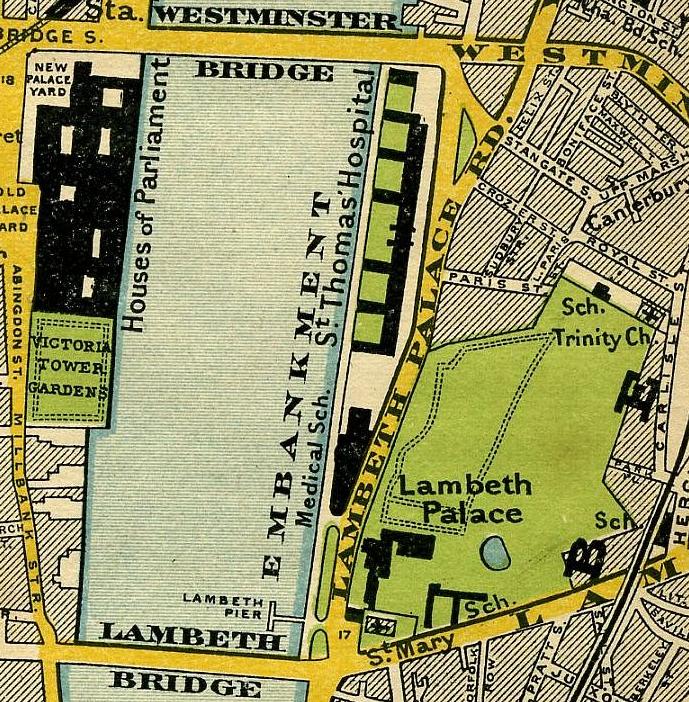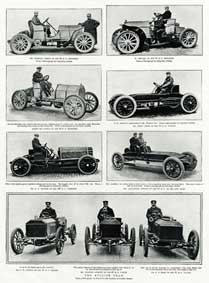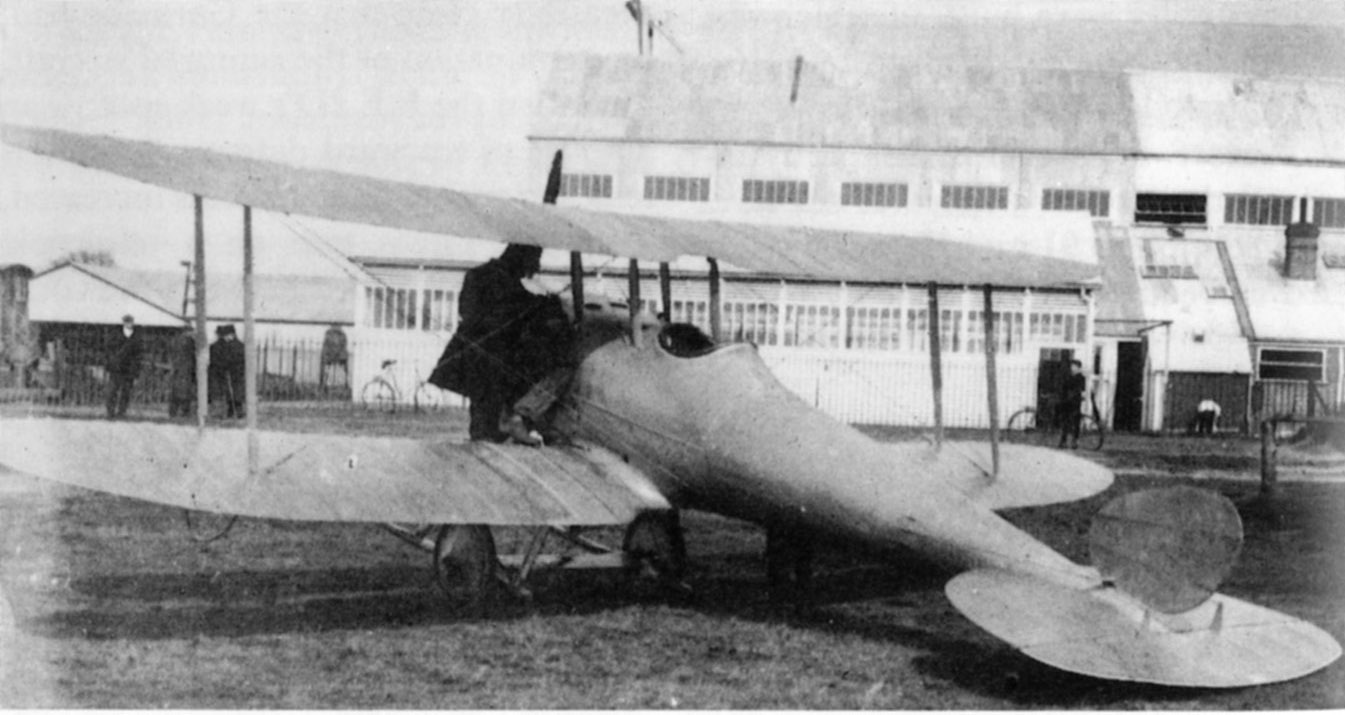|
Montague Napier
Montague Stanley Napier (14 April 1870 – 22 January 1931) was an English automobile and aircraft engine manufacturer. His grandfather, David Napier (1785–1873), had moved to London from Scotland and by 1836 had established an engineering company in Lambeth called D. Napier & Son. Montague Napier bought the business from the executors of his father's estate in 1895, and diversified into producing machine tools for the cycle industry. Following a meeting with businessman and racing driver Selwyn Edge in 1899 Napier diversified into automobile manufacturer, and for a time his company was the leading supplier of luxury cars in the British market. His focus switched from cars to aircraft engines after the outbreak of the First World War in 1914, and he developed the very successful Lion engine. Napier's failing health forced his move to the south of France in 1915, but he continued to work as a design consultant for his company. He died at his home in Cannes on 22 January 1931, ... [...More Info...] [...Related Items...] OR: [Wikipedia] [Google] [Baidu] |
David Napier (precision Engineer)
David Napier (1785–1873) was a Scottish engineer, notable for founding Napier & Son, an early automotive and aero-engine company. Biography and career David Napier was born in Dumbarton to a family of engineers (the Kilmahew branch of the Napier family). He was the son of Robert Napier (1726–1790), and cousin of another Robert Napier – known as the "Father of Clyde Shipbuilding." One of David Napier's uncles had served as a blacksmith for the Duke of Argyll. He eventually moved south, and worked for Henry Maudslay before founding his own precision engineering company in 1808 in Soho, London. In 1848, it became D. Napier & Son, when he added his son James Napier to the business partnership. The company produced machines for bullet-making, gun-boring and turning for a number of government arsenals, as well as coin-weighing machines for the Bank of England, two-cylinder printing presses (designed to print simultaneously on both sides of a sheet of paper) and a centr ... [...More Info...] [...Related Items...] OR: [Wikipedia] [Google] [Baidu] |
Lambeth
Lambeth () is a district in South London, England, in the London Borough of Lambeth, historically in the County of Surrey. It is situated south of Charing Cross. The population of the London Borough of Lambeth was 303,086 in 2011. The area experienced some slight growth in the medieval period as part of the manor of Lambeth Palace. By the Victorian era the area had seen significant development as London expanded, with dense industrial, commercial and residential buildings located adjacent to one another. The changes brought by World War II altered much of the fabric of Lambeth. Subsequent development in the late 20th and early 21st centuries has seen an increase in the number of high-rise buildings. The area is home to the International Maritime Organization. Lambeth is home to one of the largest Portuguese-speaking communities in the UK, and is the second most commonly spoken language in Lambeth after English. History Medieval The origins of the name of Lambeth come fr ... [...More Info...] [...Related Items...] OR: [Wikipedia] [Google] [Baidu] |
Selwyn Edge
Selwyn Francis Edge (1868–1940) was a British businessman, racing driver, cyclist and record-breaker. He is principally associated with selling and racing De Dion-Bouton, Gladiator; Clemént-Panhard, Napier and AC cars. Personal life Edge was born in Concord township, near Sydney, on 29 March 1868; his parents were Alexander Ernest Edge and Annie Charlotte Sharp. At age three, he was taken to London where in his teens he competed successfully as a bicycle racer, winning the North Road Cycling Club's 100 Mile Road Race in 1888 and the Westerham Hill climb when he was nineteen. One of the English Team and aged 23 he came third in the first Bordeaux–Paris cycle race in 1891. He worked for Rudge then Harvey Du Cros as manager of his new Dunlop offices in London. In 1892 he married Eleanor Rose Sharp who died sometime before 1917; his second wife, Myra Caroline Martin, whom he married in 1917, had two daughters by him. From 1910 until at least 1922 he resided at Gallops Ho ... [...More Info...] [...Related Items...] OR: [Wikipedia] [Google] [Baidu] |
Napier Lion
The Napier Lion is a 12-cylinder, petrol-fueled 'broad arrow' W12 configuration aircraft engine built by D. Napier & Son from 1917 until the 1930s. A number of advanced features made it the most powerful engine of its day and kept it in production long after other contemporary designs had been superseded. It is particularly well known for its use in a number of racing designs, for aircraft, boats and cars. Design and development Early in the First World War, Napier were contracted to build aero engines to designs from other companies, initially a Royal Aircraft Factory model and then Sunbeams. Both engines proved to be unreliable and in 1916 Napier decided to design an engine with high power, light weight and low frontal area. Napier's engineers laid out the engine with its 12 cylinders in what they called a "broad arrow"—three banks of four cylinders sharing a common crankcase. This suggested the design's first name, the Triple-Four. The configuration is also known as ... [...More Info...] [...Related Items...] OR: [Wikipedia] [Google] [Baidu] |
North Road Cycling Club
North is one of the four compass points or cardinal directions. It is the opposite of south and is perpendicular to east and west. ''North'' is a noun, adjective, or adverb indicating direction or geography. Etymology The word ''north'' is related to the Old High German ''nord'', both descending from the Proto-Indo-European unit *''ner-'', meaning "left; below" as north is to left when facing the rising sun. Similarly, the other cardinal directions are also related to the sun's position. The Latin word ''borealis'' comes from the Greek '' boreas'' "north wind, north", which, according to Ovid, was personified as the wind-god Boreas, the father of Calais and Zetes. ''Septentrionalis'' is from ''septentriones'', "the seven plow oxen", a name of ''Ursa Major''. The Greek ἀρκτικός (''arktikós'') is named for the same constellation, and is the source of the English word ''Arctic''. Other languages have other derivations. For example, in Lezgian, ''kefer'' can mean bo ... [...More Info...] [...Related Items...] OR: [Wikipedia] [Google] [Baidu] |
Great North Road (Great Britain)
The Great North Road was the main highway between England and Scotland from medieval times until the 20th century. It became a coaching route used by mail coaches travelling between London, York and Edinburgh. The modern A1 mainly parallels the route of the Great North Road. Coaching inns, many of which survive, were staging posts providing accommodation, stabling for horses and replacement mounts. Nowadays virtually no surviving coaching inns can be seen while driving on the A1, because the modern route bypasses the towns in which the inns are found. Route The traditional start point for the Great North Road was Smithfield Market on the edge of the City of London. The initial stretch of the road was St John Street which begins on the boundary of the City (the site of the former West Smithfield Bars), and runs through north London. Less than a hundred metres up St John Street, into Clerkenwell, stood Hicks Hall, the first purpose-built sessions house for the Middlesex ... [...More Info...] [...Related Items...] OR: [Wikipedia] [Google] [Baidu] |
Panhard
Panhard was a French motor vehicle manufacturer that began as one of the first makers of automobiles. It was a manufacturer of light tactical and military vehicles. Its final incarnation, now owned by Renault Trucks Defense, was formed by the acquisition of Panhard by Auverland in 2005, and then by Renault in 2012. In 2018 Renault Trucks Defense, ACMAT and Panhard combined under a single brand, Arquus. History Panhard was originally called Panhard et Levassor, and was established as an automobile manufacturing concern by René Panhard and Émile Levassor in 1887. Early years Panhard et Levassor sold their first automobile in 1890, based on a Daimler engine license. Levassor obtained his licence from Paris lawyer Edouard Sarazin, a friend and representative of Gottlieb Daimler's interests in France. Following Sarazin's 1887 death, Daimler commissioned Sarazin's widow Louise to carry on her late husband's agency. The Panhard et Levassor license was finalised by Louise ... [...More Info...] [...Related Items...] OR: [Wikipedia] [Google] [Baidu] |
Acton, London
Acton () is a town and area in west London, England, within the London Borough of Ealing. It is west of Charing Cross. At the 2011 census, its four wards, East Acton, Acton Central, South Acton and Southfield, had a population of 62,480, a ten-year increase of 8,791 people."Key Statistics; Quick Statistics: Population Density" ''''. . Retrieved 31 October 2014. [...More Info...] [...Related Items...] OR: [Wikipedia] [Google] [Baidu] |
Gordon Bennett Cup (auto Racing)
As one of three Gordon Bennett Cups established by James Gordon Bennett, Jr., millionaire owner of the ''New York Herald'', the automobile racing award was first given in 1900 in France. In 1899 Gordon Bennett offered the '' Automobile Club de France'' (ACF) a trophy to be raced for annually by the automobile clubs of the various countries. The trophy was awarded annually until 1905, after which the ACF held the first Grand Prix motor racing event at a road course near Le Mans. The 1903 event in Ireland possibly gave rise to the birth of British Racing Green. The Cup The trophy given to the winner was a Panhard, driven by the Genius of Progress, with Nike as his co-driver. Rules Competition was intended to be between national automobile clubs, or nations, and not individuals. The first contestants were France, Great Britain, the United States, Germany, Austria, Switzerland, Belgium, and Italy. Each club was required to pay a Fr3000 entry fee. Each could send up to three ... [...More Info...] [...Related Items...] OR: [Wikipedia] [Google] [Baidu] |
Rolls-Royce Limited
Rolls-Royce was a British luxury car and later an aero-engine manufacturing business established in 1904 in Manchester by the partnership of Charles Rolls and Henry Royce. Building on Royce's good reputation established with his cranes, they quickly developed a reputation for superior engineering by manufacturing the "best car in the world". The business was incorporated as Rolls-Royce Limited in 1906, and a new factory in Derby was opened in 1908. The First World War brought the company into manufacturing aero-engines. Joint development of jet engines began in 1940, and they entered production. Rolls-Royce has built an enduring reputation for development and manufacture of engines for defence and civil aircraft. In the late 1960s, Rolls-Royce was adversely affected by the mismanaged development of its advanced RB211 jet engine and consequent cost over-runs, though it ultimately proved a great success. In 1971, the owners were obliged to liquidate their business. The useful ... [...More Info...] [...Related Items...] OR: [Wikipedia] [Google] [Baidu] |
Royal Aircraft Establishment
The Royal Aircraft Establishment (RAE) was a British research establishment, known by several different names during its history, that eventually came under the aegis of the UK Ministry of Defence (MoD), before finally losing its identity in mergers with other institutions. The first site was at Farnborough Airfield ("RAE Farnborough") in Hampshire to which was added a second site RAE Bedford ( Bedfordshire) in 1946. In 1988 it was renamed the Royal Aerospace Establishment (RAE) before merging with other research entities to become part of the new Defence Research Agency in 1991. History In 1904–1906 the Army Balloon Factory, which was part of the Army School of Ballooning, under the command of Colonel James Templer, relocated from Aldershot to the edge of Farnborough Common in order to have enough space to inflate the new "dirigible balloon" or airship which was then under construction.Walker, P; Early Aviation at Farnborough, Volume I: Balloons, Kites and Airships, Mac ... [...More Info...] [...Related Items...] OR: [Wikipedia] [Google] [Baidu] |
Bristol Aeroplane Company
The Bristol Aeroplane Company, originally the British and Colonial Aeroplane Company, was both one of the first and one of the most important British aviation companies, designing and manufacturing both airframes and aircraft engines. Notable aircraft produced by the company include the 'Boxkite', the Bristol Fighter, the Bulldog, the Blenheim, the Beaufighter, and the Britannia, and much of the preliminary work which led to Concorde was carried out by the company. In 1956 its major operations were split into Bristol Aircraft and Bristol Aero Engines. In 1959, Bristol Aircraft merged with several major British aircraft companies to form the British Aircraft Corporation (BAC) and Bristol Aero Engines merged with Armstrong Siddeley to form Bristol Siddeley. BAC went on to become a founding component of the nationalised British Aerospace, now BAE Systems. Bristol Siddeley was purchased by Rolls-Royce in 1966, who continued to develop and market Bristol-designed engines. ... [...More Info...] [...Related Items...] OR: [Wikipedia] [Google] [Baidu] |







.jpg)

